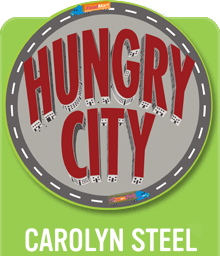Dairy Farms
The recent collapse of Dairy Farmers of Britain (DFB), one of the country’s largest dairy co-operatives, has left 400 small dairy farmers in some of Britain’s most beautiful rural areas struggling to survive. The farmers, based mainly in Yorkshire, Cumbria and Lancashire, must now either find alternative buyers for their milk in an already saturated commodity market, or receive 10p a litre for their milk – less than half the cost of production. As choices go, it is a double-Hobson, since neither option is likely to result in the farms’ survival.
DFB’s demise comes at a time when growing sections of society, from eco- and political groups to social movements such as Transition Towns, are waking up to the fact that such local networks are bound to play a crucial role in our future adaptability. Quite apart from their value in addressing the many-headed monster we face in the shape of climate change, population growth and peak-everything, such infrastructures represent the warp and weft of society without which further resilience is useless. Far from letting such networks go to the wall, we should be redoubling our efforts, not just to preserve them, but to augment and replicate them.
No political speech today is devoid of references to community, sustainability, and the desirability of nurturing both. But to state such aims without addressing the hidden obstacles lying in their path is nonsensical. The demise of small and medium-scale dairy farming in Britain is just one example of our failure to recognise the value of local economies, or the damage that global market forces have wrought on them. Our ability to effect social change has been paralysed, because the intellectual, commercial and political elements of our society are hopelessly out of kilter.
Which is where architects have a vital role to play. We architects are forever drawing visions of a better world, imagining the structures and processes that might bring them about. Now we must employ our spatial imaginations and lateral thinking, not just to describe possible future worlds, but to critique existing ones. We must use our skills to expose the invisible structures that truly shape our world and so often block our capacity to act: the political and economic power-lines, rules and regulations, patterns of ownership, denials and opacity. Only then will we meet the true design challenge of our times: to create a synthetic vision of a future society in an era of unprecedented complexity.
To a casual visitor holidaying in the Yorkshire Dales this summer, the absence of a herd of cows contentedly chewing the cud in a nearby field may seem (if noticed at all) mildly saddening. Milk, sold at eight times what the farmers were paid for it, will no doubt be for sale on supermarket shelves. But something of immense value to the region will have been lost. Twenty years from now, who knows? It may not just be the absence of cows, but the absence of milk itself, that is in question. Then people might start to take a bit more notice – but then, it will be too late. If we are to build a resilient society capable of withstanding future shocks, we must act now. Preserving local networks like DFB is not a luxury, it is a necessity.










